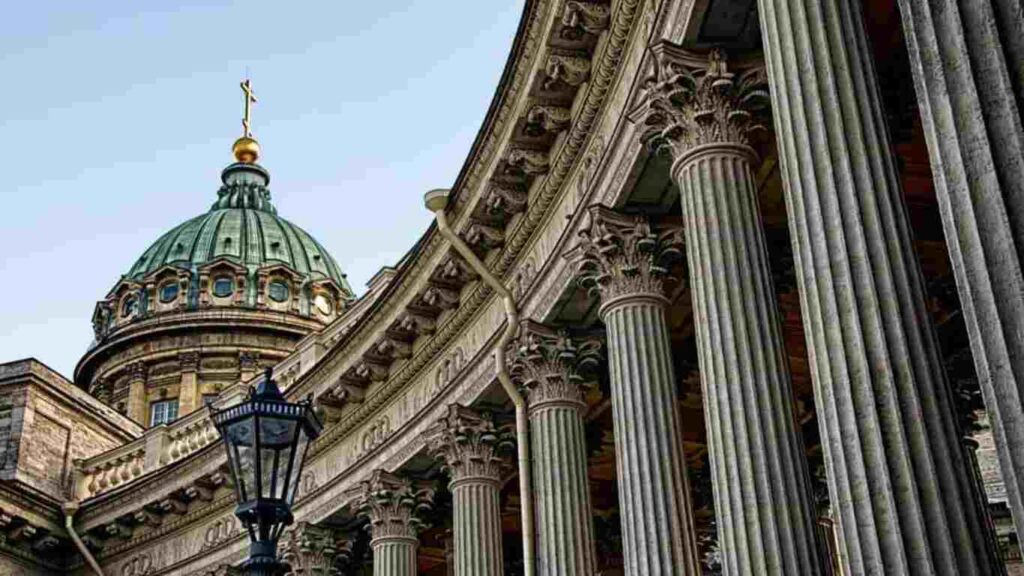A colonnade is an architectural element consisting of a series of columns that support a roof, an entablature or arches. Not only does it serve a functional purpose, but it also adds great beauty to a building. When you ask what is a colonnade in architecture you are exploring the combination of utility and beauty that these features bring.
Colonnades have had a cornerstone role in architectural history, prominently used in the classical architecture of ancient Greece and Rome and continuing to influence contemporary designers. The use of columns in architecture can represent strength, stability, and grandeur, which is why they are often utilized in public buildings and monuments.
| Feature | Description |
|---|---|
| Vertical support beams that hold up a ceiling. Columns consist of a base (plinth), a shaft, and a capital. The capital is a decorative top that can be Doric, Ionic, or Corinthian in style. | |
| The ceiling of a colonnade, which rests horizontally on top of the columns’ capitals. The entablature corresponds to the column type and may feature carved decorations. It consists of three parts: the architrave, the frieze, and the cornice. | |
| Ancient colonnades were often constructed of stone, but the Romans also used concrete. | |
| Columns and entablature form a post and lintel system, which disperses weight horizontally and compresses it through the columns, creating open spaces. | |
| Colonnades can form porticos, which are porches at the entrance to a building. | |
| Colonnades can also form peristyles, which are complete enclosures around open spaces like gardens or courtyards. | |
| Romans implemented colonnades with arches, where the ceiling between two columns curved upward, allowing greater height and space in buildings |
The History of Colonnades

Ancient Origins
The colonnade originated in ancient civilizations but reached its stylistic zenith with the ancient Greeks and Romans, who made them iconic to their architectural identity. The Parthenon in Athens and more than one Roman temple exemplify colonnades for grace and use. Such early examples established a precedent for architectural design which has lasted centuries.
Evolution Through Ages
As architectural trends changed, so did the functions and designs of colonnades. From the massive stone columns of the Romans to the more ornate versions in the Renaissance, each time adapted the fundamental structure of the colonnade to meet new aesthetic and functional demands. This versatility made it possible for colonnades to continue to be an integral part of architectural design, and, through their enduring appeal, to affect even modern architectural styles.
The colonnade consists of a series of vertical pillars or columns that support the roof.

Components of a Colonnade
Colonnades are made up of columns (the main component), and the entablature they carry. The columns’ role is not merely one of support but also of deep ornament. The element that connects the columns and replaces that which is above the columns is the entablature, which is a continuous horizontal band with three key parts: the architrave, the frieze, and the cornice, all three of which are both decorative and helpful to have, since they create a bridge between the columns.
(You may also read (category/bathroom)
Types of Columns
Columns come in many flavors, most commonly associated with the architectural orders: Doric, Ionic, and Corinthian. Every style has its own complexions, a simple fluting for a Doric column, for example, and the ornate acanthus leaves of the Corinthian order. The above types are by no means exhaustive, but they do provide a solid framework for classifying and distinguishing between various forms of colonnades, and all the environments in which we can find them.
Colonnades: Their Functional Aspects

Support and Stability
Colonnade Format Literally to Hold the Weight of the Structure Structural support is one of the most traditional and practical uses of colonnades. This renders them as useful as they are beautiful.
Aesthetic Appeal
Colonnades not only serve a structural purpose but also play an important role in the visual character of a space. They add rhythm and dimension, provide a sense of perspective and orient views, all of which enrich the viewer’s experience. Colonnades in public spaces can elevate mundane walkways into joyous passages linking different realms.
Varieties of Colonnades

Porticos vs. Peristyles
Technically, a portico is a colonnade at an entrance that is often at the front facade of a building, while a peristyle surrounds an open interior courtyard in the building, giving a more enclosed and immersive experience with the columns.
Contemporary Uses
Colonnades have evolved in modern architecture to accommodate new materials and structural techniques but generally serve the same purposes. They’re also common in public places, government buildings, even on-chain residential areas, where they impart a little classical gravitas and airy, breathable space.
Colonnades and their Cultural Importance
Colonnades is more than just a part of architecture. They are symbols of order, strength and beauty — values of the civilizations that created them. Today, they serve as adornments to civic spaces, making public spaces more civic in size and nature.
Conclusion
Exploring colonnades allows for different insights in architecture because beyond just a little insight into structural design is another, deeper insight that we can gain about the culture and history that flourishes around a certain architectural establishment. Visiting Historical Sites or Seeing Modern Adaptations Exploring on the Colonnades helps enrich one’s exposure to architecture
You may also read (the architectural marvels of steve chancellors residence)

